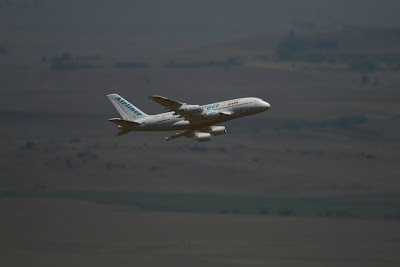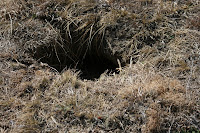
 Above and left my best group photographs. Shooting was extremely difficult in our midday sun, bright blue sky and dull brown ground conditions. Hopefully we will have our summer clouds back soon here on the highveld.
Above and left my best group photographs. Shooting was extremely difficult in our midday sun, bright blue sky and dull brown ground conditions. Hopefully we will have our summer clouds back soon here on the highveld.It was great to see so many beautifully finished models out for the event. Lots of effort went in to each and every one of them and such a pity we couldn't see them fly. However, I'm sure plans are already being made to get out to Volksrust and get them airborne in December.



As our premier Slope Scale event is named after these reptiles, here is some interesting information on the Sungazer Lizards:
On Sunday morning we all went to Oom Louis' farm for breakfast and on the road out from the farm to the main road we were priviledged to see the Sungazers in their natural habitat. If Mike hadn't brought them to our attention, we probably wouldn't have even noticed them. These large lizards stay near their burrows and from a distance look just like sticks sticking up from the ground. On foot we managed to get about fifteen meters from them before they dashed into their burrows. I managed to get one good photo:
 Here is an extract from the National Museum Bloemfontein website on these fascinating reptiles:
Here is an extract from the National Museum Bloemfontein website on these fascinating reptiles:Sungazers are a CITES species, listed in the South African Red Data Book - Reptiles and Amphibians. Sungazers are endemic to South Africa and occur mainly in the Free State Province, with smaller populations occurring in south-west Mpumalanga and a small population in north-eastern Natal. This is the largest of the Cordylus species and can grow to a total length of 376 mm.

The Sungazer derives its name from its habit of anterior body-up posturing, and thus raised on its forelimbs, gives the impression that it is gazing at the sun when outside of its burrow. The Afrikaans name "Ouvolk" means old person, and has most probably been used because this lizard spends considerable sitting outside its burrow in an inactive state, either thermoregulating, or waiting for passing prey. Sungazers inhabit loamy grassland and live in, often winding, self-made burrows, which may be up to nearly 4 m in length. The orientation of most burrow openings is east through to north-west. One to two young are usually born every second year and are much brighter than the adults with bright yellow and orange markings. Agriculture and development are major threats to this species.
An environmentally conscious company such as Eskom can be commended in their efforts to protect and save this species. Around 1983, the development of Majuba Power Station in Mpumalanga, threatened the survival of a large number of Sungazer colonies. Eskom then put aside land for a Sungazer reserve and, with the help of the then Transvaal Directorate of Nature Conservation and the contractors, managed to remove over 1500 Sungazers from the power station site and very successfully relocate them to the new reserve.

3 comments:
Hi,
Derek very well done!!!
What a Blog? !!! , from Old Toppies to Ouvolk not to talk a bout PSS and Big J3 CUB's,also and not to forget Charl's first born youngster Nicolas. Congratulations to Charl and Emma with birth of your youngster on Monday.
Regards to all,
Piet
Hi Derek,
Thanks for the Sungazer article, lots to learn on the berg blog , please lets have some more Sungazer lizard articles next year in the build up to the SUNGAZER SCALE SLOPE event, scheduled to be 3 days over one of the long weekends.
Mike
Hi Derek,
Thanks for the Sungazer article, lots to learn on the berg blog , please lets have some more Sungazer lizard articles next year in the build up to the SUNGAZER SCALE SLOPE event, scheduled to be 3 days over one of the long weekends.
Mike
Post a Comment